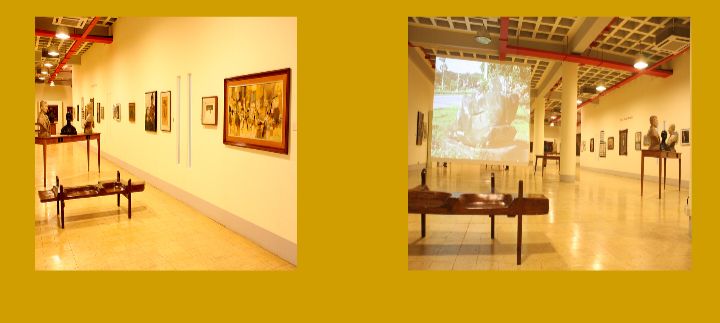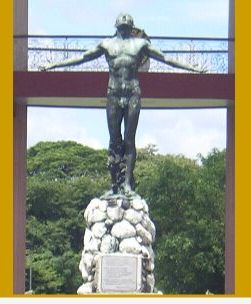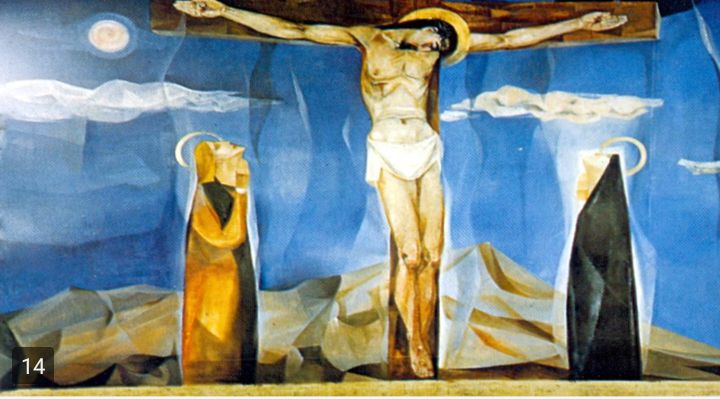Contemporary Art
1/32
There's no tags or description
Looks like no tags are added yet.
Name | Mastery | Learn | Test | Matching | Spaced |
|---|
No study sessions yet.
33 Terms
national artist of the philippines
are individuals who have been honored for their significant contributions to the development of Philippine arts and culture.
CCP
Cultural Center of the Philippines
NCCA
National Commission for Culture and the Arts
categories of the national artist award
Music, Dance, Theater, Visual Arts, Literature, Film and Broadcast Arts, Architecture and Allied Arts
guillermo tolentino
His works often draw inspiration from Philippine history, mythology, and nationalism, reflecting Filipino Identity. He is considered the Father of Philippine Sculpture.
Benedicto Cabrera
His works are featured in the Bulwagan ng Dangal (UP's University heritage Museum)

Vicente Manansala
Though some have been transferred to museums
fernando amorsolo
His works highlighted Filipino identity, tradition and everyday life.
Translations
show how the works of National Artist evolve across language, medium and time.
Collaborative
show the synergy of different art form, producing a richer, multidimensional Filipino cultural identity.
Guillermo Tolentino's Oblation
Originally sculpted in concrete in 1935, later translated into bronze 1950 for permanence

Vicente Manansala's Cubism
His distinct transparent cubism in painting was also translated into Mural Form at the UP Diliman Chapel, integrating modernist vísual language into sacred art.

NAA
National Artist Award
issues surrounding the NAA
Outdated categories, Institutional bias, Political interference, Regional and cultural exclusion, Lack of media inclusivity, Disconnect with younger artists
Outdated categories
Excludes hybrid and non-traditional practices
Institutional bias
Favors mainstream over avant-garde or emerging artists
Political interference
Undermines meritocracy and credibility
Regional and cultural exclusion
Marginalizes local, indigenous, and rural art
Lack of media inclusivity
Overlooks digital, virtual, and tech-based art
Disconnect with younger artists
NAA loses cultural and generalizational relevance
Cultural Mapping
is the process of identifying, documenting, and analyzing the cultural resources of a specific area or community. It is a way of visually and descriptively representing the richness of a community's cultural assets.
To preserve indigenous knowledge, To promote cultural identity, To educate people through art, To inspire innovation rooted in tradition
Purpose of Mapping This Culture
Cultural Assets
refer to the traditional and local cultural elements, both tangible and intangible that serve as inspiration, material, or subject in creating modern or contemporary artistic expressions.
Tangible Assets
are physical items or structures that can be touched and have concrete worth.
Intangible Assets
refers to things that you cannot touch, but they are real, meaningful, or important, like emotions, ideas, traditions, or values.
support systems, institutions, and initiatives
are essential in helping artists create, showcase, and sustain their work. Although they differ across regions, these structures collectively enhance the vibrancy, accessibility, and development of contemporary art.
Support System Of The Arts
institution, organizations and collectives, Media, and alternative platforms
institution
refers to an established organization or structure that supports, promotes, presents, educates, or preserves artistic practices and cultural works
Organizations And Collectives
in supporting and shaping artistic practice - especially outside traditional or formal institutions like museums or universities.
Organizations
is a formal group or institution (often nonprofit or community- based) that supports artists and the arts through funding, programming, education, exhibitions, or advocacy.
Collectives
is a group of artists or creatives who work together to share resources and create art, usually in a community-based or activist setting. They often challenge traditional art systems and provide alternative ways to express ideas.
Media
refers to the tools, materials, or channels used to create, communicate, or present art, information, or messages.
Alternative Platforms
give artists space to explore themes, reach new audiences, and challenge dominant systems in art and society.